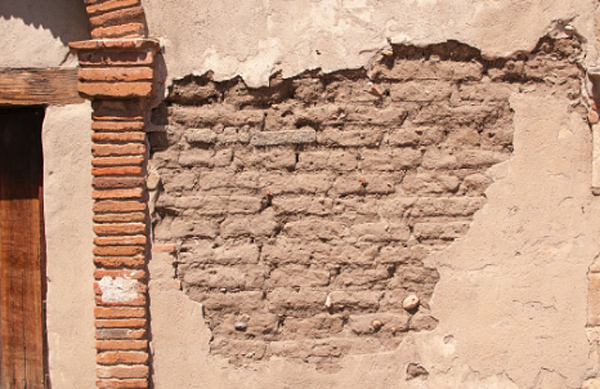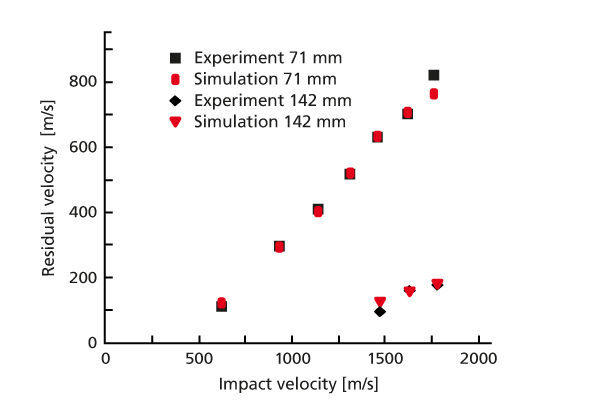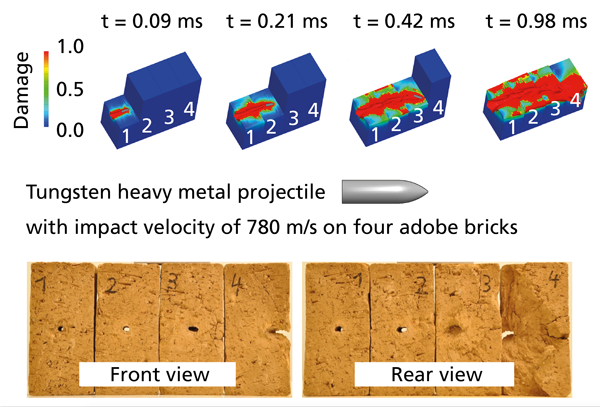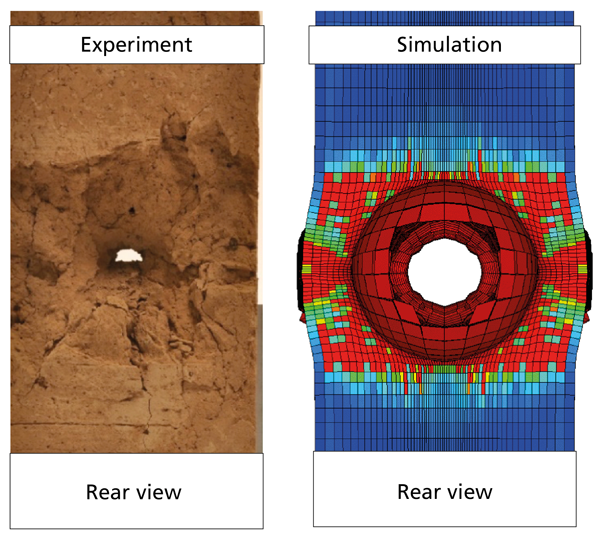


Endballistic research investigates the penetration behavior of projectiles in materials. Over the course of many decades, the occurring physical processes have been investigated by means of scientific methods for a wide range of experimental conditions and parameter ranges and, in most cases, have been transferred into model descriptions. As a result, penetration processes of projectiles are predictable with relatively high accuracy, particularly where conventional protective materials such as armor steels are considered. However, there has recently been a need for research on the ballistic response behavior of building materials. While concrete has been intensively characterized for a long time in the context of civilian applications, such as the protection of buildings or industrial facilities against bomb attacks, the missions of the German Armed Forces (Bundeswehr) have raised new questions regarding the ballistic protection of building elements and building materials. In this context, for example, the evaluation of the protective properties of masonry is of great interest in order to ensure the protection of civilian population and deployed soldiers in the areas of operation. An example of a building material used in the Bundeswehr’s possible fields of operation are adobe bricks (Figure 1). Despite a low density of one gram per cubic centimeter to two grams per cubic centimeter and also a low compressive strength of typically one megapascal to five megapascals, these show a very complex behavior towards impacting projectiles, in particular with regard to failure and fragmentation.
In order to be able to understand and evaluate the response behavior of adobe walls during penetrating impact processes, Fraunhofer EMI is pursuing a scientifically founded approach. It is based on the development and use of material models for the application in numerical simulation calculations. Laboratory tests are used to validate the simulation models so that on the basis of these, predictive simulations are possible. Another important aspect is that the material parameters required for the models used at Fraunhofer EMI can be measured with quasistatic and dynamic test methods. For the material discussed here, it has been shown in particular that it is of central importance to fundamentally record the compacting behavior, in particular the associated pore collapse, using high-dynamic test methods such as planar-plate impact tests.
